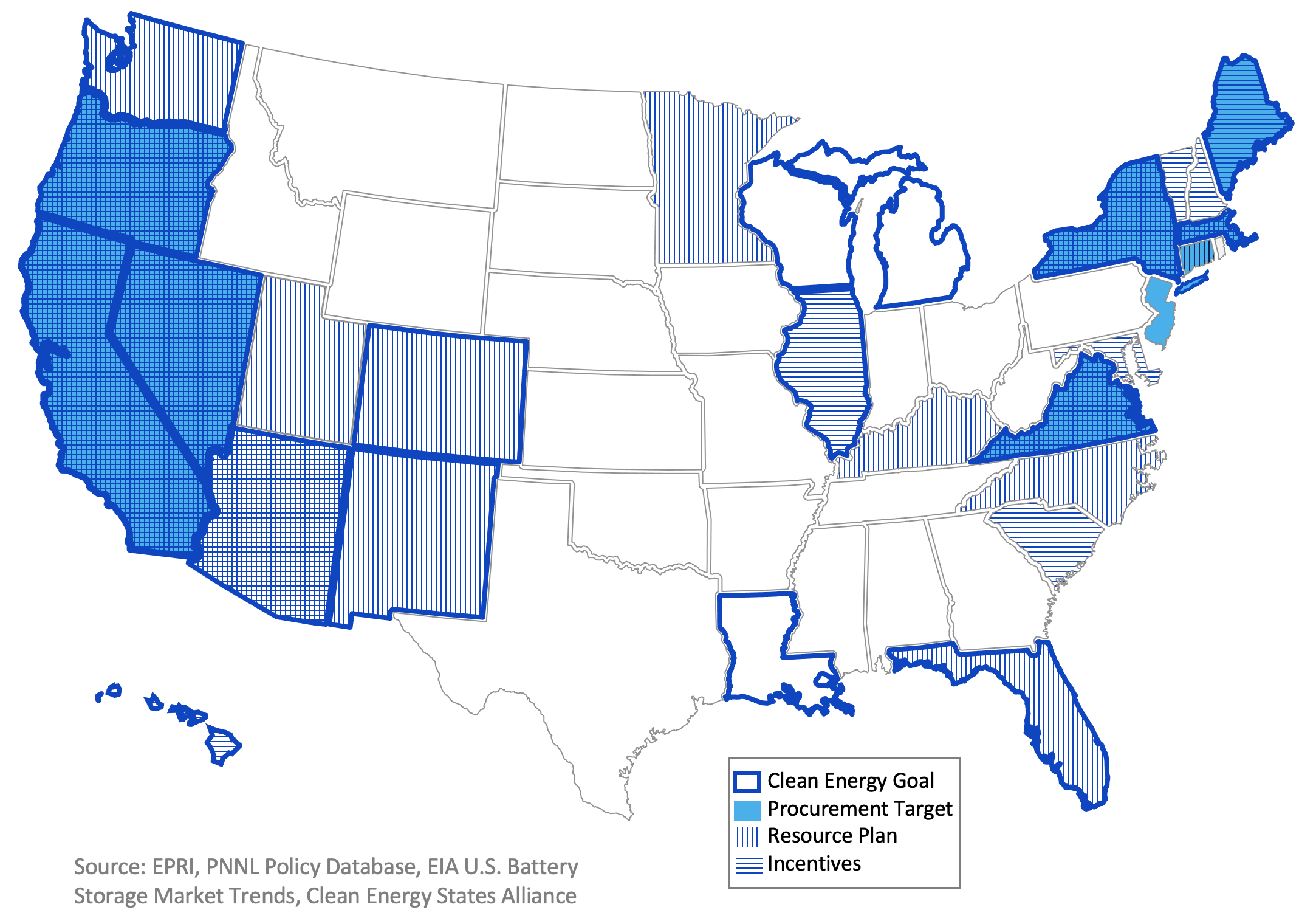The State of Energy Storage: Drivers and Big Picture
Decreases in Technology Costs
Massive research and development investment and manufacturing scale-up has driven costs down for lithium ion battery storage. Costs are expected to continue to decrease.
Increasing Renewable Generation
Solar PV is driving over generation in midday and increased evening ramp drives value for flexibility and energy storage. Wind energy is similarly driving flexibility needs.
Evolving Utility Needs
- The grid is sized for infrequent peak needs and using energy storage for peak load reduction provides significant cost reduction opportunity to electricity customers.
- Utility asset infrastructure is aging and peak load reduction may extend asset life and offer opportunity to consider investment in new technologies.
- Storage is being considered in generation planning. Battery storage costs may cross-over combustion turbines in the next decade. Accounting for operational benefits, breakeven may be sooner.
Increasing Utility Customer Choice and Engagement
Customers (residential, commercial, industrial) are considering energy storage for
- Bill savings
- Increased energy independence
- Renewable energy goals
- Backup premise or critical loads
Policy and Regulatory Changes
Federal Policy
FERC Order 755 Frequency Regulation Compensation in Organized Markets
- Pay for Performance compensation based on speed and accuracy
FERC Order 841 Electric Storage Participation in Markets Operated by RTOs and ISOs
- Storage can participate in energy, ancillary services, and capacity markets when technically able
- Clarifies technical provisions for energy storage
FERC Order 845-A Reform of Generator Interconnection Procedures and Agreements
- Revises large generator interconnection requirements
- Allows interconnection below combined nameplate for hybrid systems
FERC Order 2222 Participation of Distributed Energy Resource Aggregations in Markets Operated by RTOs and ISOs
- Enables Aggregated DER (or Virtual Power Plant) participation in ISO/RTO markets
U.S. State Policy
States are taking varying approaches for energy storage deployment

Procurement Targets: Regulators or legislators set procurement goals and mandates requiring utilities to directly procure or contract storage.
Incentives: Legislators create economic incentives (e.g. rebates or subsidies) for deploying storage; No mandatory procurement
Resource Plans: State agencies or regulators fund studies or direct utilities to create an energy plan with consideration of storage; No targets or incentives